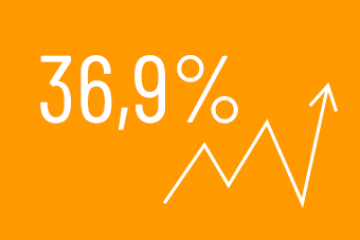What is Private Debt ? Let's take a look at it!
As we begin to see glimpses of light at the end of the Covid-19 pandemic tunnel, investors are looking for a measure of certainty. With interest rates still low and not expected to rise in the short term, and with stock markets still volatile, it is not surprising that the ability to make alternative investment presents a dilemma for many people.
Much has been said and written about Private Equity, but the other side of the coin, Private Placements, have not gone unnoticed. Private Debt is a valid alternative which should be considered both for companies and for investors. Let's learn more about this together.
What is the history of private debt?
After the financial crisis of 2008-09, many companies (those which survived) found themselves facing the challenge of re-starting their businesses all over again. They needed capital to finance their business activity and to recover from this economic collapse, but the banks, hampered by post-crisis regulations, were unwilling to lend using flexible products.
Direct lenders therefore offered an attractive (or, in practice, inevitable) alternative. These types of loan were much more flexible and responsive to these challenges than the loans offered by traditional banks. And although the private debt market was already emerging as a very attractive asset class before 2008-2009, the economic crisis has further accelerated this process.
Private Debt vs Private Equity
The former can be defined as an investment of capital enabling the acquisition of a private (unlisted) company’s debt, as opposed to the acquisition of its shares. But what does it include in the choice of opportunities it offers? Undoubtedly, the first opportunity that comes to mind is ‘Direct Lending’, i.e. a type of lending which is not associated with banks, where loans are generally granted to small and medium-sized businesses. The direct link to a rapidly growing phenomenon such as Microcredit is self-evident. Then there is ‘Mezzanine Finance’, a hybrid form of financing, between debt and shareholding, which gives a lender the right to convert into an equity interest in the company in the event of its default. Last but not least, in the Private Debt world we find so-called ‘Distressed Debt’: special situations which run through intermediate paths between Private Debt and ‘Venture Debt Funds’, which invest in corporate debt in the initial or start-up phase.
One of the main differences between Private Debt and Private Equity lies in the liability it imposes on corporate balance sheets, since the debt constitutes a perennial burden where the entrepreneur only benefits from the mere aspect of ownership since with the debt issued he does not have to give up a stake in company, as in the case of shares. There are, certainly, fewer incentives for investors to work in order to help the growth of the company than exist for shareholders. The latter are interested in expanding and making the business a success, as well as offering their expertise and experience in all respects (think of the so-called ‘Angel Investors’ or the already mentioned ‘Venture Capital Funds’), an interest which is not shared by those who invest in debt.
Some figures
According to the annual survey conducted by KPMG and the Association of the Luxembourg Fund Industry (‘ALFI’), the assets managed by private debt funds increased by 36.2% in 2020 for a total of €108.4 billion, a stratospheric result given that the global private debt industry stood at €714 billion in 2020. Combining the data, we can see that Luxembourg represents (and collects) 15% of the global flow related to private debt. As indicated in the Prequin survey, this is expected to increase by 11.4% per year, to reach €1.23 trillion by the end of 2025. If we were to transfer this projection to the Luxembourg market, we would have assets under management of about €180 billion within five years. Given that the KPMG/ALFI survey reveals that, globally, 82% of new debt fund promoters are “made in” the EU, 43% of these represent the United Kingdom, 21% Germany, 10% France and 1% Luxembourg.
The latter is considered by most observers to be one of the major beneficiaries of Brexit in terms of business moved on the London-Luxembourg axis; so, given this, who knows if the expected result for the Grand Duchy might not be seen even more optimistically, and - why not - with a few more zeroes!
Private Debt and unit-linked policies
Once again, Luxembourg life policies are a versatile instrument capable of serving as a vehicle for all financial instruments, including those of the private debt business. In the month of March 2021 alone, the Unit-Linked sector raised a record €9 billion in Italy and continued to perform well in other markets. It is therefore reasonable to assume that investors who seek to achieve positive results while the Private Debt market continues to be popular and dynamic cannot fail to appreciate this arrangement, especially if you consider that having instruments relating to Private Debt in a Life Policy should result in satisfactory diversification of the underlying portfolio, as well as maximizing the opportunities and benefits which both products have to offer, complementing each other.
You can combine private debt and aLuxembourg unit-linked life insurance policies as it allows the underlyings portfolio to be diversified.





























